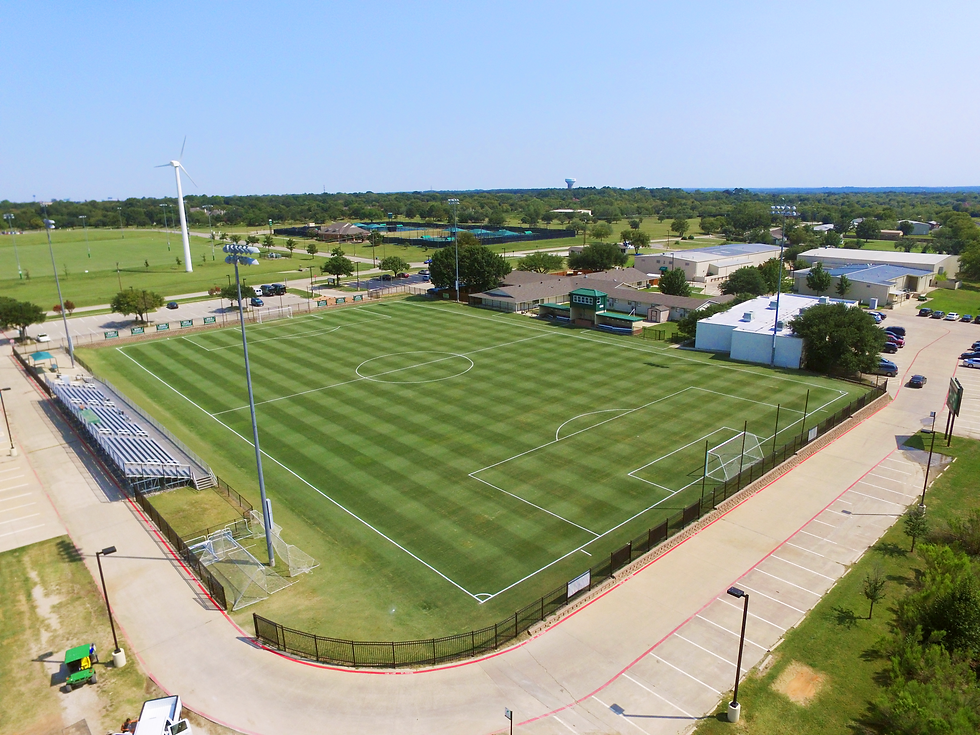The most beneficial thing you can do to your fields is also the easiest; mow! Mowing is the foundation that allows you to build your beautiful field.
It is something most people are familiar with and is fairly simple to complete. You only have to do one thing, cut the grass. While this is a macro-level objective you are completing, there are 10-15 micro objectives you are also doing, if you follow some basic steps. Words like easy, simple, and basic are starting to create a theme. That’s not a trick, remember mowing is the most beneficial thing you can do to your fields and is also the easiest.
The main question when mowing should be, “how is my quality of cut?”. To answer that, you need to ask, “How well are your mower and its blades cutting the grass?”, “Are they bending it over, tearing it, not cutting evenly?”, “How much am I cutting each time”, etc. All of these can negatively affect the quality of your grass, which I’ll explain below. However, there are two main things you can do to help improve your quality of cut. Keep your blades sharp and mow as frequently as possible. This will almost completely remove those issues.
Disclaimer: There are essentially two kinds of mowers and mowing blades. Rotary mowers and reel mowers. Rotary mowers have one single blade that spins horizontally and cuts by shear force and a sharp blade. Reel mower blades are quite a bit more complicated but usually allow for a better quality of cut. They have a set of thin blades (6, 8, and 10 blades per reel can be common) that are curved around the reel. Each blade has a flat face that needs to be kept smooth, by a process called “back-lapping”, because there is a stationary piece of steel, the bedknife, that cuts the grass by “pinching” it between one of the 6, 8, or 10 blades and the bedknife. There are also specific techniques/processes for each of the mowers you should follow when sharpening these machines’ blades. While these mowers are very different, the best practices for mowing remain the same. You can follow the below regardless of whether you use a rotary or reel mower.
Keeping Your Blades Sharp
When you mow with dull blades, the mower can have trouble cutting cleanly through all of the grass thus leading to a host of other issues. When dull blades bend or tear the grass blades instead of cutting them. This leaves a much larger area of the exposed grass blade. Allowing for areas for the plant to lose water (drought stress), become more susceptible to insects and diseases, and take much longer to heal from potential damage.
Dull blades also have more trouble cutting through thicker grass. When we miss a day or two because of rain or mechanical issues, the grass is not only getting taller but also stronger inside. Trying to mow that with dull blades will result in possibly having to mow it twice (because it can’t cut through all the grass the first time), as well as putting significant stress on the engine. Both of these lead to budget-killers with labor and repairs. Investing the time to sharpen your blades once a week or every other week, will save you time, improve the health of your field, and save on costly equipment repairs.
Frequency
Another easy and simple way to improve your grass by mowing is to mow as frequently as possible. There can be too much of a good thing though, if you aren’t cutting ANY grass when mowing you can be over compacting the soil, adding extra stress to your grass, and possibly wasting expensive fuel.
There is a fairly generic 1/3 rule for the frequency of mowing. It says you should never cut more than 1/3 of the grass blade. This usually equates to 2-3+ times a week, depending on your fertility program. At some levels of play, people are mowing 6-7 days a week, depending on their schedule. While this does provide benefits and is kind of a necessity at the really high levels of sports, it costs a lot of time and fuel.
The more frequent you mow, the less leaf tissue you are mowing. This makes it easier for the blades to get a clean cut. With a clean-cut, the grass has a much easier time “healing” and also keeps most of the plant green, whereas the tearing caused by dull blades, leaves a plume of dead grass behind it. Not only does mowing more frequently give you a better cut, but it also will allow you to mow a little faster and now have to mow twice. This will save labor and fuel costs.
A few additional mowing tips to help your grass:
Mow a different direction each time
This helps the grass “learn” to grow straight up, resulting in denser grass that’s easier to get a clean cut.
Mow as much as your schedule allows when the grass is dry and in the morning.
Even sharp blades can have trouble cutting smoothly through wet grass and mowing in the more allows the plant to start healing quicker from the sun.
As you can see, you are accomplishing a list of things each and every time you mow. It’s easy to get caught up in the repetitive nature of mowing and forget its significance. If you can keep your blades sharp and more as often as possible, you will begin to strengthen your stand of grass. Once you can check all these mowing boxes, and only once you can, you can then begin to look into your IPM program, irrigation, cultural practices, etc. Mowing is the foundation for your field maintenance plan.
.png)
Comments